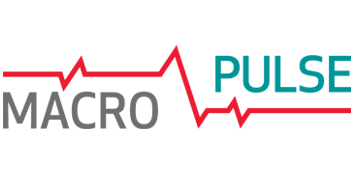
Production markedly above the pre-pandemic level
In accordance with GUS data, the sold production of industry in enterprises employing more than 9 people increased by 1.0% YoY in October vs. a 5.9% increase in September, running slightly above our forecast (0.5%) in line with the market consensus. The main reason for the decrease in the dynamics of industrial production between September and October was an unfavourable difference in the number of working days (in September 2020 the number of working days was one day higher from 2019, while in October 2020 it was one day lower than the year before). Seasonally-adjusted industrial production increased by 1.6% MoM in October. Consequently, October was the first month in which the seasonally-adjusted production stood markedly above (ca. 1.4%) the level recorded in February 2020, namely in the last month before the strong negative pandemic effect on production.
Export branches continue to boost production growth
In October, like in recent months, the main source of industrial production growth was the increase of activity in segments with a significant percentage of export sales in revenues. Relatively high annual industrial production dynamics were recorded i.a. in “electrical equipment” (17.4% YoY in October vs. 26.6% in September), “motor vehicles, trailers and semi-trailers” (1.4% YoY vs. 3.0%), “furniture” (5.5% vs. 15.8%) ,”computers, electronic and optical products” (8.2% YoY vs. 22.8%), “textile products” (7.1% vs. 12.9%), and “rubber and plastic products” (4.4% vs. 10.7%). We estimate that in branches where the percentage of exports in sales exceeds 50%, industrial production rose by 4.1% YoY in October vs. a 0.1% and -0.9% increase in construction-related and in other branches, respectively. The factor behind higher production in the export-oriented branches is the gradual recovery in global trade, signaled earlier by the October business survey results for China and the Eurozone, including Germany (see i.a. MACROmap of 26/10/2020) as well as a relatively good epidemiological situation in Germany (no “hard” lockdown in this country). The structure of the branches which recorded a relatively high increase in industrial production indicates that consumption is one of the main sources of the recovery in global trade.
The second wave of the pandemic will limit GDP growth in Q4
The released today by GUS results of the survey of sentiment in manufacturing point to its significant deterioration. The seasonally adjusted general business climate indicator dropped in October to the lowest level since June 2020. The main reason for the deterioration of sentiment in manufacturing is the second wave of the COVID-19 pandemic. This view is supported by a marked increase in the percentage of companies pointing in the GUS survey to serious or threatening the company’s stability negative consequences of the coronavirus pandemic (40.5% in total, the highest percentage since June 2020). Another measure reflecting the negative impact of the pandemic on the situation in manufacturing companies is the growing percentage of absent employees due to quarantine or “other restrictions” which amounted to 4.7% in November and was the highest since April 2020. This signals growing supply-side barrier for industrial production growth, as confirmed by the results of the October PMI survey (see MACROmap of 2/11/2020). It is also worth noting that a marked decrease in the general business climate indicator in November was recorded also in other main areas of the economy, including construction, retail trade, transport and warehouse management, as well as catering and accommodation (where the deterioration of sentiment was particularly strong). The wide range of the deterioration in November is in line with our macroeconomic scenario anticipating a significant decrease in GDP dynamics from -1.6% YoY in Q3 down to -4.5% in Q4. This scenario is consistent with the assumption that the second wave of the pandemic will not result in international supply chains being broken again.
Today’s better-than-expected data on industrial production in October are neutral for PLN and yields on Polish bonds.

